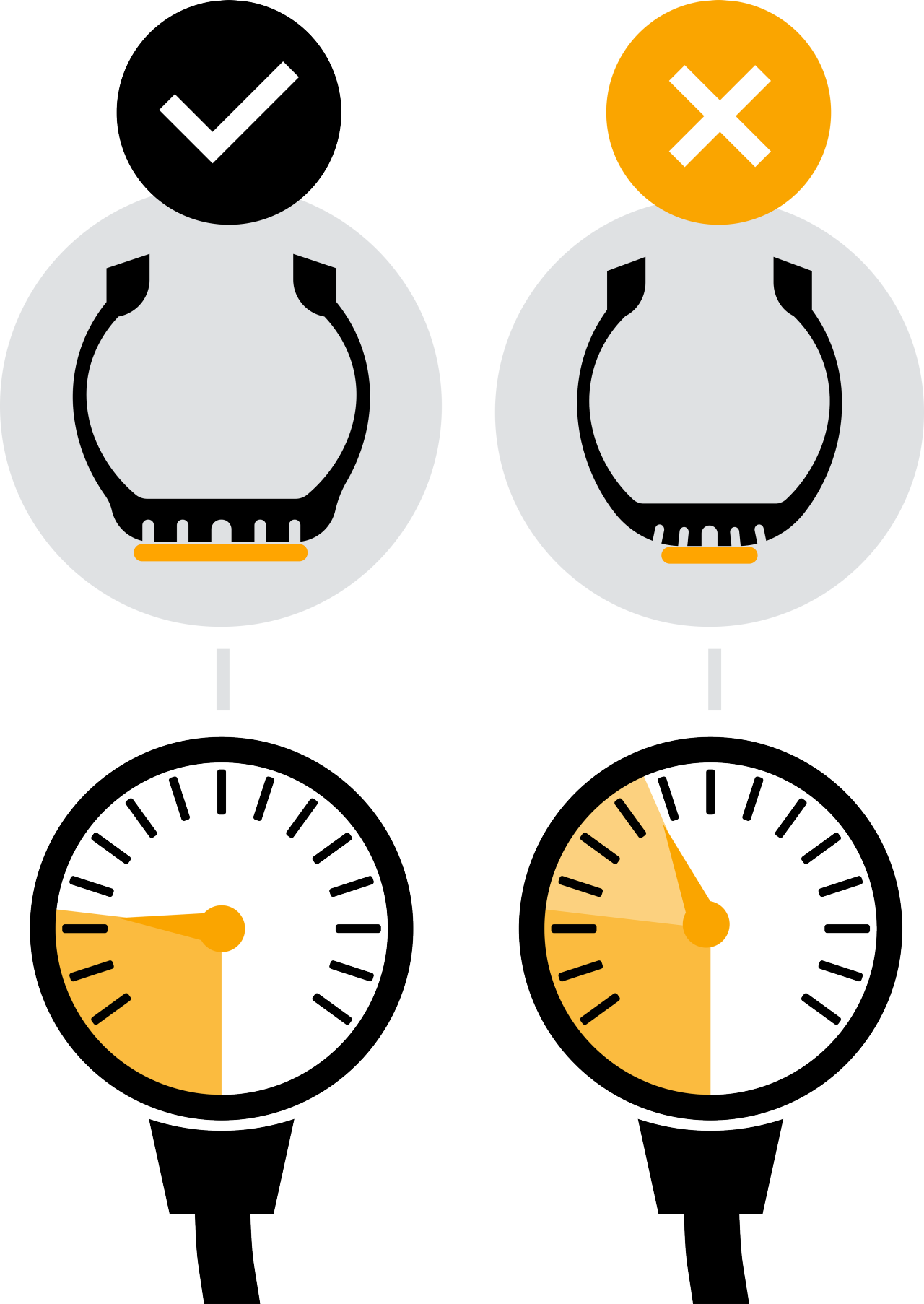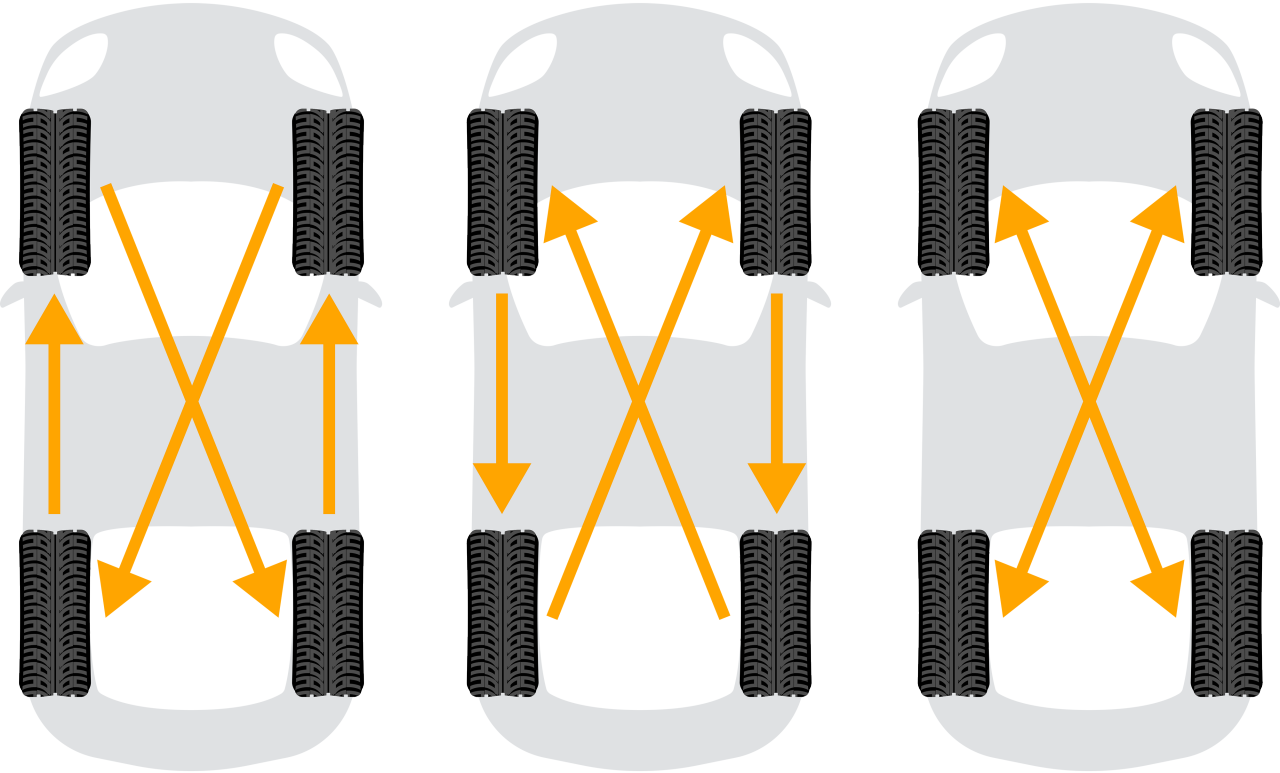
Visit Continental Tires in your country for local vehicle fitment
# Tire Care and Maintenance
Tire mileage
Factors influencing tire mileage
The long-term mileage performance of your tires depends on many factors. We explain what they are, and what you can do to prolong the life of your tires.

Low to medium impact on tire mileage
There are two factors that have a low- to medium-term impact on tire mileage – tire width and overinflation.
Tire width: Wider tires have a bigger contact patch with the road. This translates into lower ground pressure, which reduces tire wear and increases the life of your tires. However, the handling behavior of the tire is also improved, so if you drive the car in a sporty or aggressive style, there will be some impact on tire mileage.
If you avoid driving or turning corners too aggressively, or accelerating and decelerating too rapidly, then you can expect higher mileage from your tires.

Overinflation: If the inflation pressure is too high for the load of the vehicle, the ground pressure will increase around the center of the tire’s contact patch, therefore increasing wear on this part of the tire.
The best practice is to check your tire pressure every two to four weeks, and to follow the vehicle manufacturer’s recommendations for part and full loads when inflating your tires.
Medium impact on tire mileage

The mid-level factors that affect tire mileage are more diverse, but these tips for preventative maintenance can mitigate their impact.
Driven axle: Tire wear will be higher on the driven axle of the car than on the free-rolling axle. In the case of a rear-wheel drive vehicle, there is a more balanced wear relationship between tires on the front and rear axles. With a front-wheel drive vehicle, the wear to the front tires is increased by the steering forces exerted on the front axle.
The best technique to prolong the life of your tires in this instance is tire rotation, done at regular intervals through the year, i.e. when switching from summer tires to winter tires.
- For cars which are rear-wheel or four-wheel drive, rotate the tires from the rear axles to the front, and move the front tires to the opposite sides of the rear axle.
- For front-wheel drive vehicles, move the tires from the front axles to the same position at the rear, and the rear tires are moved diagonally to the opposite sides of the forward axle.
- The x-pattern is another possibility for cars with front-wheel drive, where all tires are moved diagonally to a different axle and a different position.
Please note that tire rotation patterns are more limited for tires with a directional patten; they can only be switched from the the same positions on the front to rear axles, and vice versa – not from side-to-side.
Road surface: While driving a vehicle normally, the influence of the road surface is relatively minor. However, a rough and abrasive road surface can significantly reduce the service life of your tires if you are also driving the car aggressively.
Our advice here is to avoid poorly maintained roads where possible, or not to go off road too often without the appropriate tires. If rough-surfaced roads are a regular part of your journeys, then consider fitting dedicated all-terrain tires instead.
Ambient temperature: The chemical and physical properties of summer and winter tires are optimized for specific operating temperatures. At temperatures below 45˚F, summer tires will wear more quickly. At temperatures above 45˚F, winter tires will wear more quickly.
The critical point is to fit tires that are appropriate to the season. It isn’t just a factor to prolong the life of your tires; it will maintain the performance and safety characteristics of your car all year round.
High impact on tire mileage
Now we come to the most significant factors that affect tire mileage, and here too the driver can make a difference.

Tread compound: When developing tires, there are target conflicts between wet grip, wear, and rolling resistance, which means that one property is sometimes strengthened at the expense of another (although modern premium tires are made with sophisticated silica tread compounds that help to mitigate the usual trade-off between wear and wet grip).
When shopping around for a new set of tires, it helps to research the particular strengths of the tire compound design. That way, it won’t come as a surprise when the tires show signs of wear sooner than you might previously have thought.
Driving style: Fast and sporty driving is a significant factor in the lifespan of your tires. Strong acceleration and braking – plus fast cornering speeds – increases tire wear significantly.
So long as you stay within the road safety laws, we won’t lecture you about your driving style. But if you were to drive that little bit slower or accelerate with a little less power, it would go a long way toward extending the service life of your tires.
Pressure and load: If the inflation pressure of the tire is too low for the load of the vehicle, slip can occur in the contact patch between the tire shoulder and the center. This increased slip leads to higher wear and a reduction in the lifespan of the tire.
There will inevitably be trips to the hardware store or vacation road trips where the car has to carry a full load, but at all other times, don’t keep anything more than necessary in the trunk of the car. Try to keep the weight off, and adjust the tire pressure between normal load and full load as required. Maintaining the recommended tire pressure is also a factor in better fuel economy.
Suspension geometry: Badly adjusted steering and suspension geometry has a huge impact on the lifespan of your tires and can typically be identifiable as irregular wear on the tire shoulder.
If you suspect that there is a problem with either the steering or suspension, especially after an unexpected jolt like potholes in the road or bumping into a kerb, you should visit your local garage for an inspection.
Engine power: Cars with higher power and higher torque can reduce their tire mileage over time – but this also depends on how the driver leverages the capabilities of the vehicle.
For cars with higher torque, the best option is going to be an ultra-high performance (UHP) tire, which is specially engineered to match the capabilities of an ultra-high performance car.
Related content
-
 2024/09/20Car safety is significantly upgraded with an integrated TPMS. Learn all about integrated tire-pressure monitoring systems and how they work.Tire Pressure Monitoring System (TPMS)Read more
2024/09/20Car safety is significantly upgraded with an integrated TPMS. Learn all about integrated tire-pressure monitoring systems and how they work.Tire Pressure Monitoring System (TPMS)Read more -
 2024/09/20Whenever you have new wheels and tires fitted to your car, it’s essential for road safety to have the lug nuts retorqued after the first 50 kilometers.Retorquing wheelsRead more
2024/09/20Whenever you have new wheels and tires fitted to your car, it’s essential for road safety to have the lug nuts retorqued after the first 50 kilometers.Retorquing wheelsRead more -
 2024/09/20Proper tire balance will distribute weight equally around the entire circumference of the tire. Unbalanced wheels cause vibrations and premature wear.Balancing tiresRead more
2024/09/20Proper tire balance will distribute weight equally around the entire circumference of the tire. Unbalanced wheels cause vibrations and premature wear.Balancing tiresRead more